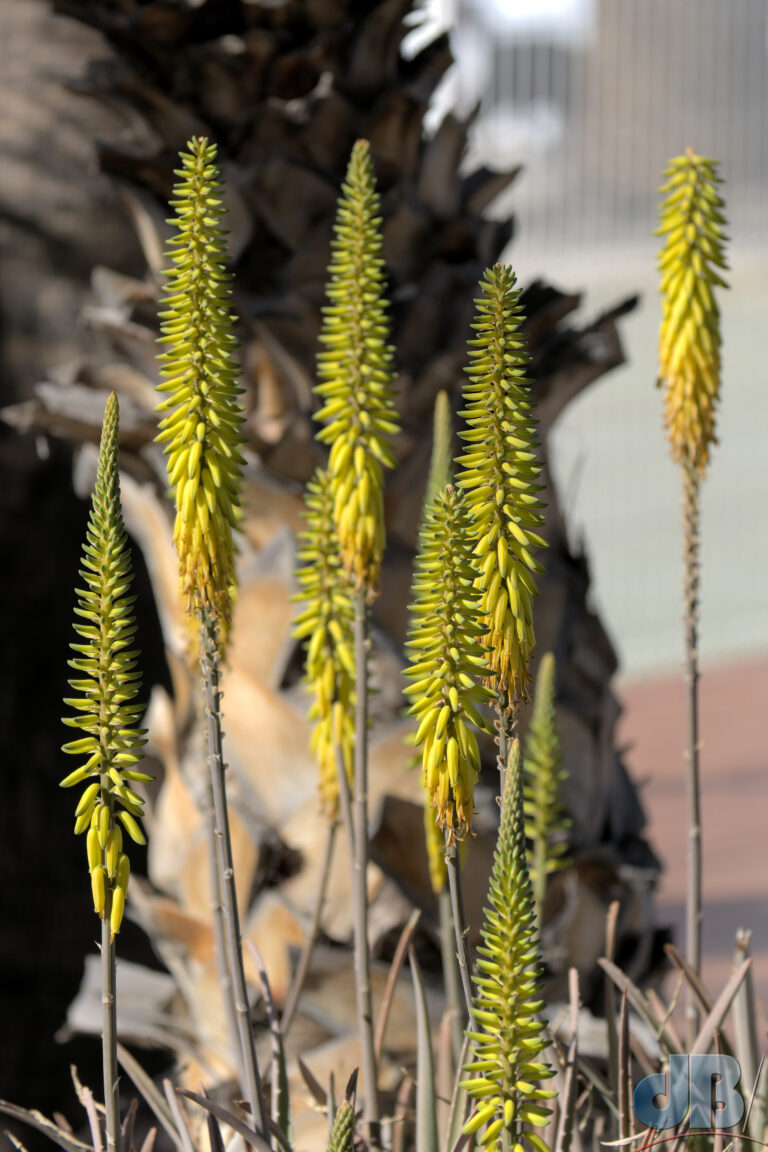While I was chasing the Monarch on Tenerife, I grabbed some photos of some intriguing yellow, spike-like flowers growing from a succulent. I should’ve known, they were Aloe vera flowers. Aloe vera is well known as one of those plants that have been used in topical remedies for centuries and for which modern claims have associated with them a whole host of hyperbole. Indeed, there are Aloe vera tetrahedral sales systems the world over. Mostly BS, of course.

Nevertheless, gel from the leaves of the plant is supposed to be an immunostimulant, antiviral, antineoplastic, and have gastrointestinal properties. The gel-forming polysaccharide, a mucopolysaccharide, acemannan is claimed to be the active ingredient. It’s worth noting that the plant’s leaves also contain a toxin, aloin.
Acemannan has the luxurious IUPAC name:
(2S,3S,4R,5S,6S)-6-[(2R,3R,4R,5S,6R)-6-[(2R,3S,4R,5S,6R)-5-acetamido-6-[(2R,3R,4R,5S,6R)-4-acetyloxy-6-[(2R,3R,4R,5S,6R)-4-acetyloxy-6-[(2R,3R,4R,5S,6S)-4-acetyloxy-5-hydroxy-2-(hydroxymethyl)-6-methoxyoxan-3-yl]oxy-5-hydroxy-2-(hydroxymethyl)oxan-3-yl]oxy-5-hydroxy-2-(hydroxymethyl)oxan-3-yl]oxy-4-hydroxy-2-(hydroxymethyl)oxan-3-yl]oxy-4-acetyloxy-5-hydroxy-2-(hydroxymethyl)oxan-3-yl]oxy-4-acetyloxy-3-[(2R,3S,4R,5R,6R)-4-acetyloxy-5-[(2R,3S,4R,5R,6R)-4-acetyloxy-3-hydroxy-6-(hydroxymethyl)-5-methoxyoxan-2-yl]oxy-3-hydroxy-6-(hydroxymethyl)oxan-2-yl]oxy-5-hydroxyoxane-2-carboxylate.
